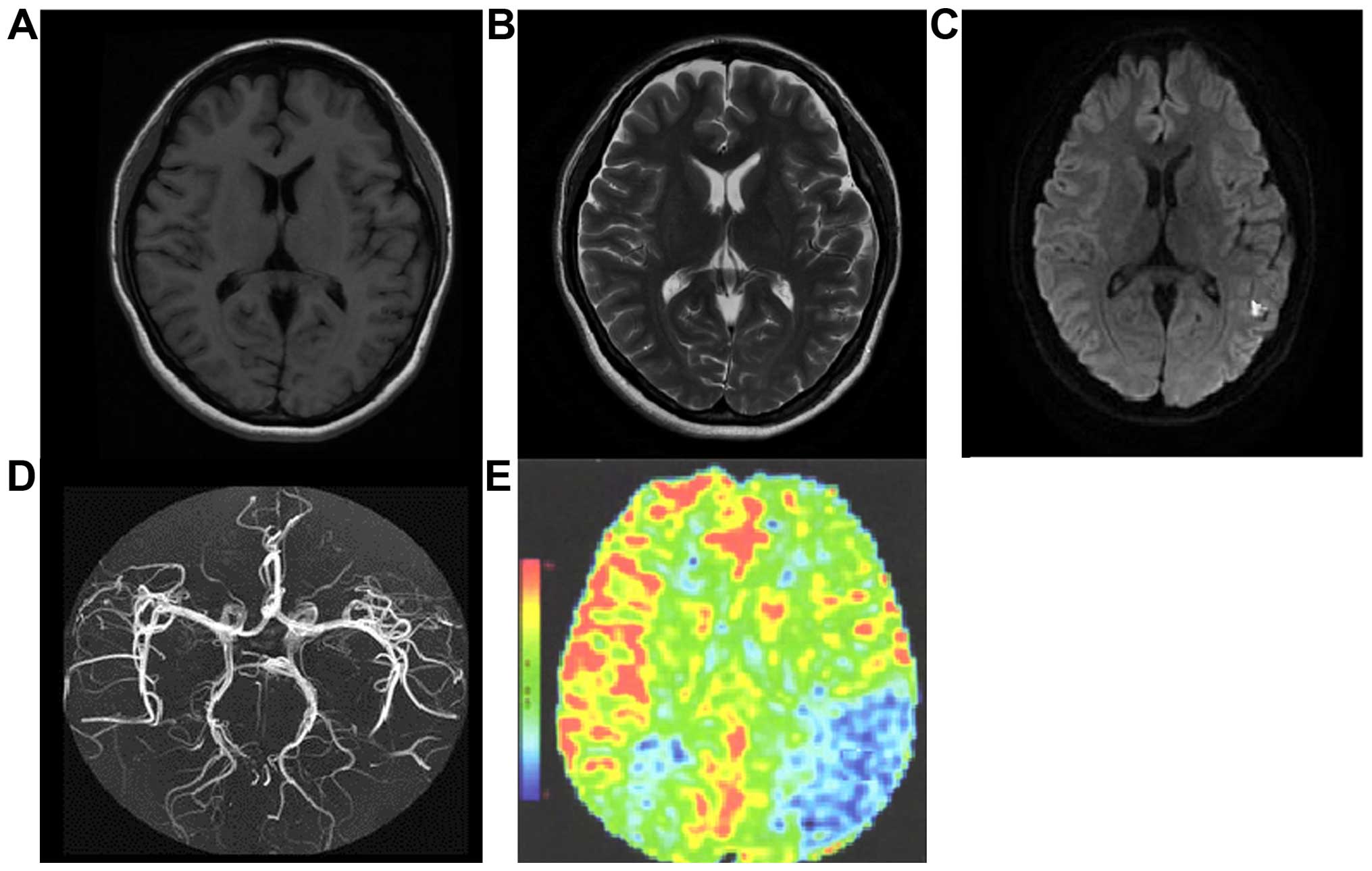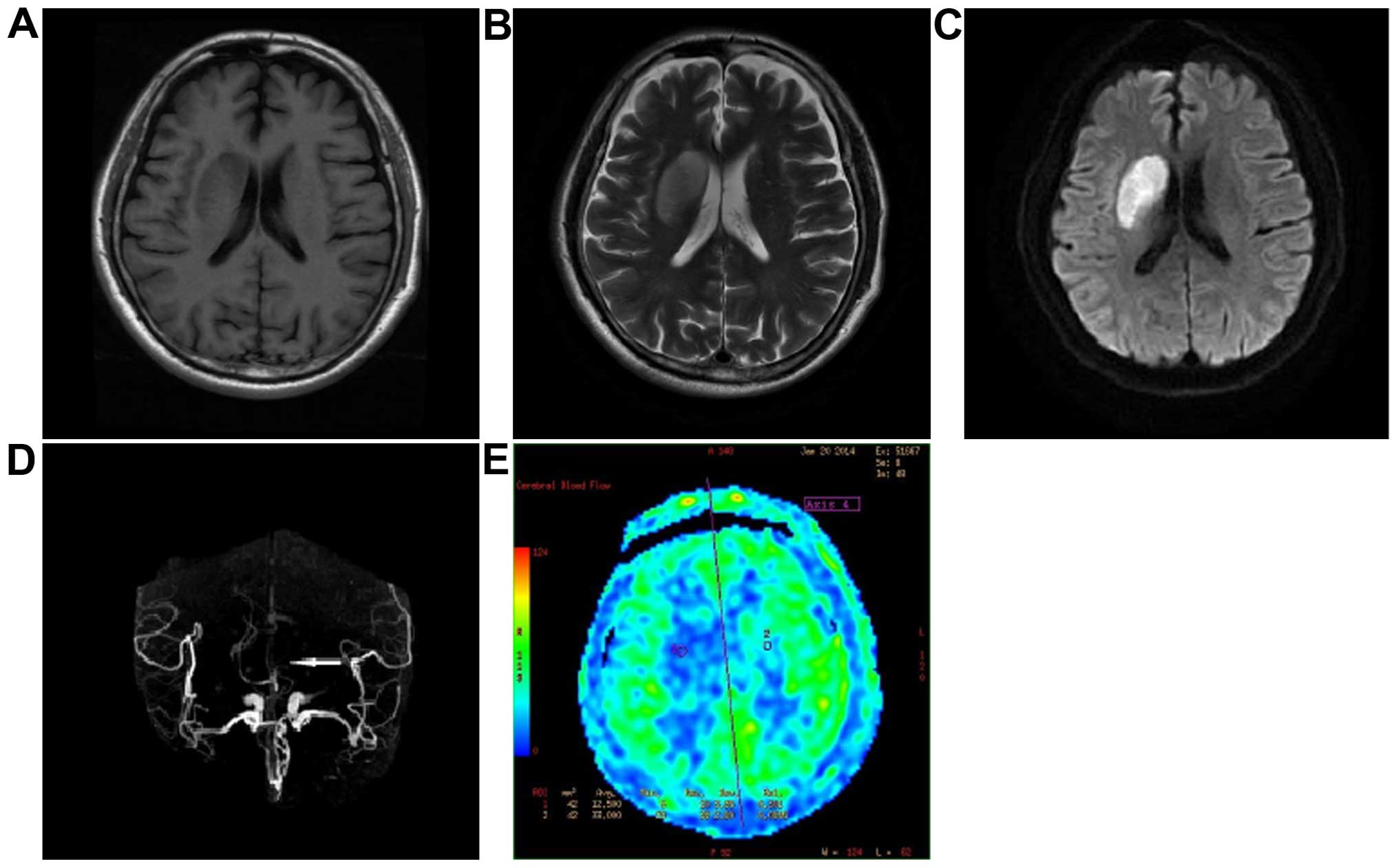|
1
|
Bu X, Li C, Zhang Y, Xu T, Wang D, Sun Y,
Peng H, Xu T, Chen CS, Bazzano LA, Chen J and He J: CATIS
Investigators. Early Blood Pressure Reduction in Acute Ischemic
Stroke with Various Severities: A subgroup analysis of the CATIS
trial. Cerebrovasc Dis. 42:186–195. 2016. View Article : Google Scholar : PubMed/NCBI
|
|
2
|
Psychogios K, Stathopoulos P, Takis K,
Vemmou A, Manios E, Spegos K and Vemmos K: The Pathophysiological
Mechanism Is an independent predictor of long-term outcome in
stroke patients with large vessel atherosclerosis. J Stroke
Cerebrovasc Dis. 24:2580–2587. 2015. View Article : Google Scholar : PubMed/NCBI
|
|
3
|
Kivikko M, Kuoppamäki M, Soinne L,
Sundberg S, Pohjanjousi P, Ellmen J and Roine RO: Oral levosimendan
increases cerebral blood flow velocities in patients with a history
of stroke or transient ischemic attack: A pilot safety study. Curr
Ther Res Clin Exp. 77:46–51. 2015. View Article : Google Scholar : PubMed/NCBI
|
|
4
|
Snow NJ, Peters S, Borich MR, Shirzad N,
Auriat AM, Hayward KS and Boyd LA: A reliability assessment of
constrained spherical deconvolution-based diffusion-weighted
magnetic resonance imaging in individuals with chronic stroke. J
Neurosci Methods. 257:109–120. 2016. View Article : Google Scholar : PubMed/NCBI
|
|
5
|
Zhang SX, Yao YH, Zhang S, Zhu WJ, Tang
XY, Qin YY, Zhao LY, Liu CX and Zhu WZ: Comparative study of
DSC-PWI and 3D-ASL in ischemic stroke patients. J Huazhong Univ Sci
Technolog Med Sci. 35:923–927. 2015. View Article : Google Scholar : PubMed/NCBI
|
|
6
|
Eugène F, Gauvrit JY, Ferré JC, Gentric
JC, Besseghir A, Ronzière T and Raoult H: One-year MR angiographic
and clinical follow-up after intracranial mechanical thrombectomy
using a stent retriever device. AJNR Am J Neuroradiol. 36:126–132.
2015. View Article : Google Scholar : PubMed/NCBI
|
|
7
|
Faraco CC, Strother MK, Dethrage LM,
Jordan L, Singer R, Clemmons PF and Donahue MJ: Dual echo
vessel-encoded ASL for simultaneous BOLD and CBF reactivity
assessment in patients with ischemic cerebrovascular disease. Magn
Reson Med. 73:1579–1592. 2015. View Article : Google Scholar : PubMed/NCBI
|
|
8
|
Nael K, Meshksar A, Liebeskind DS, Wang
DJ, Ellingson BM, Salamon N and Villablanca JP: UCLA Stroke
investigators: Periprocedural arterial spin labeling and dynamic
susceptibility contrast perfusion in detection of cerebral blood
flow in patients with acute ischemic syndrome. Stroke. 44:664–670.
2013. View Article : Google Scholar : PubMed/NCBI
|
|
9
|
Wang DJ, Alger JR, Qiao JX, Gunther M,
Pope WB, Saver JL, Salamon N and Liebeskind DS: UCLA Stroke
Investigators: Multi-delay multi-parametric arterial spin-labeled
perfusion MRI in acute ischemic stroke - Comparison with dynamic
susceptibility contrast enhanced perfusion imaging. Neuroimage
Clin. 3:1–7. 2013. View Article : Google Scholar : PubMed/NCBI
|
|
10
|
Kaichi Y, Okada G, Takamura M, Toki S,
Akiyama Y, Higaki T, Matsubara Y, Okamoto Y, Yamawaki S and Awai K:
Changes in the regional cerebral blood flow detected by arterial
spin labelingafter 6-week escitalopram treatment for major
depressive disorder. J Affect Disord. 194:135–143. 2016. View Article : Google Scholar : PubMed/NCBI
|
|
11
|
Garraux G, Hallett M and Talagala SL: CASL
fMRI of subcortico-cortical perfusion changes during memory-guided
finger sequences. Neuroimage. 25:122–132. 2005. View Article : Google Scholar : PubMed/NCBI
|
|
12
|
Bibic A, Knutsson L, Schmidt A,
Henningsson E, Månsson S, Abul-Kasim K, Åkeson J, Gunther M,
Ståhlberg F and Wirestam R: Measurement of vascular water transport
in human subjects using time-resolved pulsed arterial spin
labelling. NMR Biomed. 28:1059–1068. 2015. View Article : Google Scholar : PubMed/NCBI
|
|
13
|
Guo L, Zhang Q, Ding L, Liu K, Ding K,
Jiang C, Liu C, Li K and Cui L: Pseudo-continuous arterial spin
labeling quantifies cerebral blood flow in patients with acute
ischemic stroke and chronic lacunar stroke. Clin Neurol Neurosurg.
125:229–236. 2014. View Article : Google Scholar : PubMed/NCBI
|
|
14
|
Calamante F, Thomas DL, Pell GS, Wiersma J
and Turner R: Measuring cerebral blood flow using magnetic
resonance imaging techniques. J Cereb Blood Flow Metab. 19:701–735.
1999. View Article : Google Scholar : PubMed/NCBI
|
|
15
|
Chalela JA, Alsop DC, Gonzalez-Atavales
JB, Maldjian JA, Kasner SE and Detre JA: Magnetic resonance
perfusion imaging in acute ischemic stroke using continuous
arterial spin labeling. Stroke. 31:680–687. 2000. View Article : Google Scholar : PubMed/NCBI
|
|
16
|
Bokkers RPH, van Osch MJP, van der Worp
HB, de Borst GJ, Mali WP and Hendrikse J: Symptomatic carotid
artery stenosis: Impairment of cerebral autoregulation measured at
the brain tissue level with arterial spin-labeling MR imaging.
Radiology. 256:201–208. 2010. View Article : Google Scholar : PubMed/NCBI
|
















